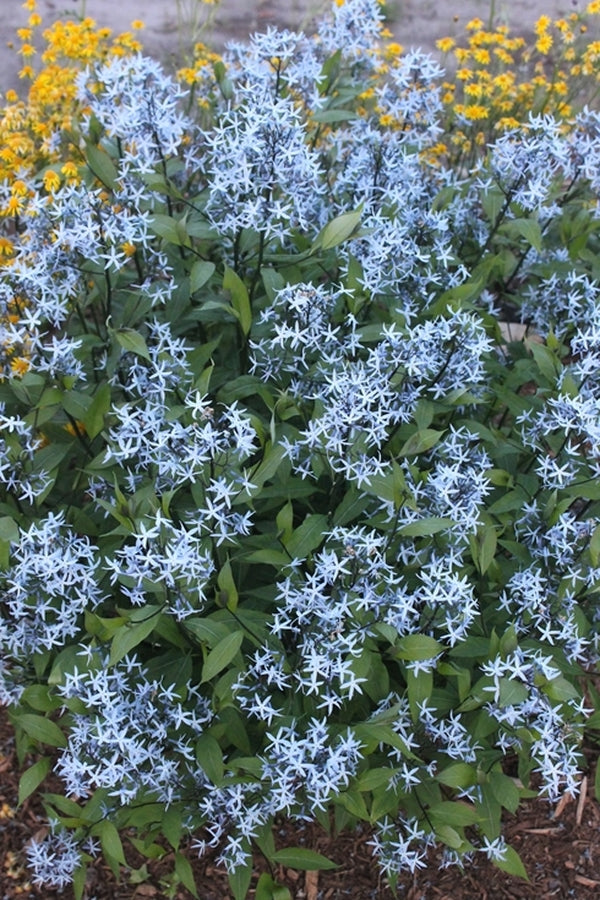Amsonia tabernaemontana 'Storm Cloud'
Storm Cloud Bluestar
This plant is not currently for sale. This is an archive page preserved for informational use.
Shop Available AmsoniaItem #: 12043
Zones: 5a to 8b, at least
Dormancy: Winter
Height: 24" tall
Origin: United States
Pot Size: 3.5" pot (24 fl. oz/0.7 L)
In 2011, plant breeder Hans Hansen and Tony were botanizing along a woodland stream in a remote Bibb County, Alabama forest when we spotted several clumps of amsonia flowering in the wet, deep shade. We collected divisions of a few clones and after trialing them in both NC and Michigan, we selected one we both agreed was the best amsonia we'd ever grown. Amsonia tabernaemontana 'Storm Cloud' forms a compact 2' tall x 3' wide clump that emerges with black stems, which contrast nicely with the dense heads of sky blue flowers...simply fantastic!
Maintenance:
Amsonia 'Storm Cloud' is a very low maintenance perennial that does not need division or resetting since it tends to get better with each passing year. Deer usually avoid browsing on amsonia.
Amsonias hybridize with other amsonias in the garden, so will not come true from seed. For that reason, we recommend removing the long, thin, brown pods before the seed drop in mid to late summer.
The ornamental value of the foliage of bluestars end once it turns brown. The tidy gardener might want to cut the stems to the ground at this point, which is fine, though it can be left all winter with no ill affect. It is best to cut the stems down before new growth starts in spring.
Garden Conditions:
Amsonia 'Storm Cloud' has a wide range of garden tolerance. It can be grown in very dry soils alongside cactus, but can also be grown in soggy pondside soils. Although it will tolerate some light shade, it performs and flowers much better with more than 4 hours of sun daily.
Garden Value:
All Amsonia species are valuable for their early bloom of pure blue flowers. The narrow foliage provides an attractive contrast to bolder textured plants.
Natural Impact:
Amsonia is pollinated by an array of insects including butterflies, moths, long-tongued bees, as well as hummingbirds.

-
Other Attributes
Genus: Amsonia
Flower Color: Blue
Leaf Color: Green
Bloom Time: Spring
Container Role: Thrillers
Garden Themes: Cottage Garden Plants , Green Roofs , Rock Garden Plants
Other: Butterfly Attracting Plants , Cut Flower Plants , Deer Resistant Plants , Drought Tolerant Plants , Florida Native Plants , Georgia native plants , Groundcovers , Pollinator Plants , Medicinal Plants , North American Native Plants , North Carolina Native Plants , Plant Delights Introductions , Rabbit Resistant Plants , Rain Garden Plants , Salt Tolerant Seaside Plants , Texas Native Plants , Plant Delights Creations and Discoveries , United States Native Plants


